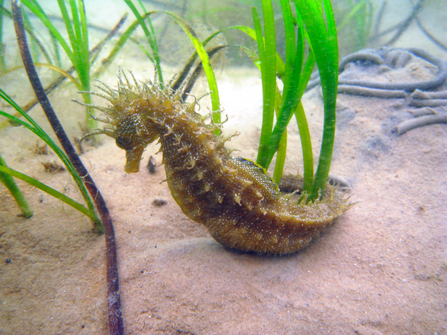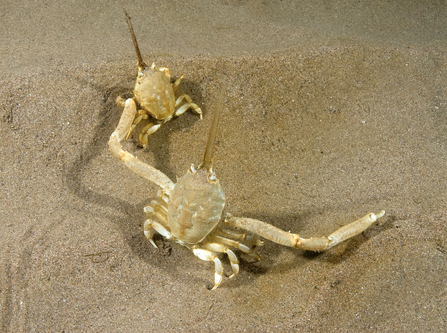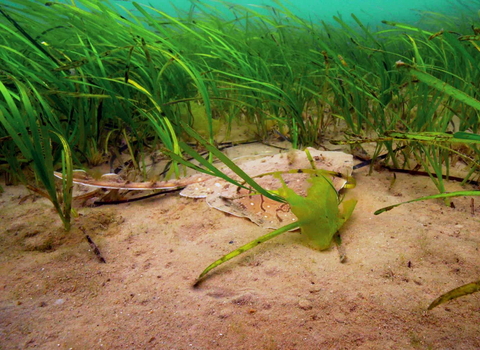*UPDATE: As of the 31st May, Studland Bay has now been designated a Marine Conservation Zone!
Studland Bay is a very special place. Lying on the Dorset coast, this shallow, sunlit bay is home to an extensive seagrass meadow – one of the best examples on the South Coast.
The seagrass meadows are home to pipefishes and colourful wrasses, as well as breeding populations of both types of seahorse found in British seas - the short-snouted seahorse and the long-snouted (or spiny) seahorse.
The seagrass beds have another vital role to play in the marine ecosystem – they provide perfect nursery areas for the undulate ray and the sea bass, both of which are endangered. Juveniles of commercial species like bream and some flatfish have also been recorded here.




